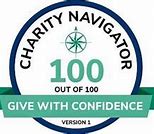Vision
We envision a St. Louis community where everyone has what they need to pursue their goals.
Mission
Assistance League of St. Louis volunteers invest in student success and support families in crisis.
Strategic Plan for Fiscal Year 2025-26 Through 2028-29
This strategic plan is comprised of Goals and Strategies that will guide the chapter’s decisions, priorities, and efforts over the next four fiscal years. Goals describe the desired results the chapter seeks on each of seven strategic priorities. Strategies describe the high-level approaches the board has authorized the chapter to take in pursuit of those goals. Both are written broadly enough to allow for the chapter to respond to changing conditions, landscapes, opportunities and challenges that arise over the life of the strategic plan. Yet, they are specific and focused enough to provide consistent direction to the chapter through leadership changes.
Goal 1: The chapter’s financial investments align with its strategic priorities and impact intentions. To increase the likelihood of achieving its strategic goals and operating in a focused and aligned way, the chapter will enhance its budgeting process.
Strategies
- Develop prescriptive rather than responsive budgets based on board-designated annual financial priorities.
Goal 2: The chapter has the infrastructure and tools to effectively develop and manage partnerships. To supplement and maximally leverage the chapter’s financial and volunteer resources, the chapter will collaborate with other nonprofit service providers, sponsors, and non-member community volunteers.
Strategies
- Thoughtfully and intentionally identify, evaluate, and select partners.
- Ensure consistent, professional practices when managing partnerships.
- Effectively engage non-member community volunteers.
Goal 3: The chapter maximizes its reach and impact within each partner school by concentrating financial and volunteer resources in select partner schools. The chapter’s support for students (through Operation School Bell and Steps) is currently spread across seven school districts and 56 schools, with some schools only receiving one of the programs. Concentrating on the chapter’s footprint can increase its impact on the school by deepening relationships and streamlining operations while ensuring all ALSTL services are available.
Strategies
- Ensure student support programs partner with schools aligned with the chapter’s Vision, Mission, partnership criteria, impact intentions, and capacities.
- Facilitate the transition to or introduction of other service providers to schools as needed.
- Ensure program decisions are aligned with strategic priorities and partnership criteria and are implemented and communicated thoughtfully.
Goal 4: Children have the resources and support they need at home and in school to develop a love of reading. The chapter aims to deepen the reach and impact of its Books from Friends program by building home and classroom libraries.
Strategies
- Concentrate the reach of and revise the program model for Books from Friends to ensure students receive books over multiple years to build a sufficient home library over time.
- Distribute grants to teachers to build classroom libraries and enhance their literacy goals.
- Develop partnerships with organizations who can reach parents and equip them to encourage literacy at home.
- Explore corporate sponsorships to support a consistent and meaningful presence in selected schools and to expand the revised program to reach additional schools.
Goal 5: A greater proportion of the chapter’s members actively participate in program and support activities. To sustain the chapter’s growth and success and achieve strategic goals, an active and engaged membership is essential.
Strategies
- Ensure member types, rights, and responsibilities reflect the interests, capacities, and actual engagement of the current and desired membership.
- Regularly monitor and share key metrics of membership composition and engagement.
- Ensure the responsibilities of leadership roles are clearly defined and manageable.
- Proactively recruit and develop leaders within the membership.
- Actively recruit newly retired individuals.
- Establish a young professionals group of members to support fundraising and community collaborations.
Goal 6: The chapter’s scholarship program reaches more adult students and supports their continued success. To further increase the chapter’s impact on the educational success of students and the stability of families, the chapter will lengthen its continuum of support to adult students.
Strategies
- Increase access to St. Louis Community College by removing barriers to the HiSET exam.
- Meaningfully increase the number or value of scholarships awarded.
- Pilot a partnership with Parents as Teachers to provide job readiness coaching to parents.
Goal 7: The chapter is prepared to make informed and strategic decisions about staffing. As the chapter’s assets, budget, and network of partnerships grow, the benefits of having consistent, professional staff also grow. To preserve the chapter’s brand, support its increasingly sophisticated operations, and amplify the efforts of volunteers, paid staff may be necessary in the future.
Strategies
- Develop a deep and data-informed understanding of the chapter’s leadership and operational needs.
- Learn from the experiences of other chapters and membership associations.
- Educate members about common practices in nonprofit organizational design and staffing, including the costs and benefits of staffing and potential structures.


